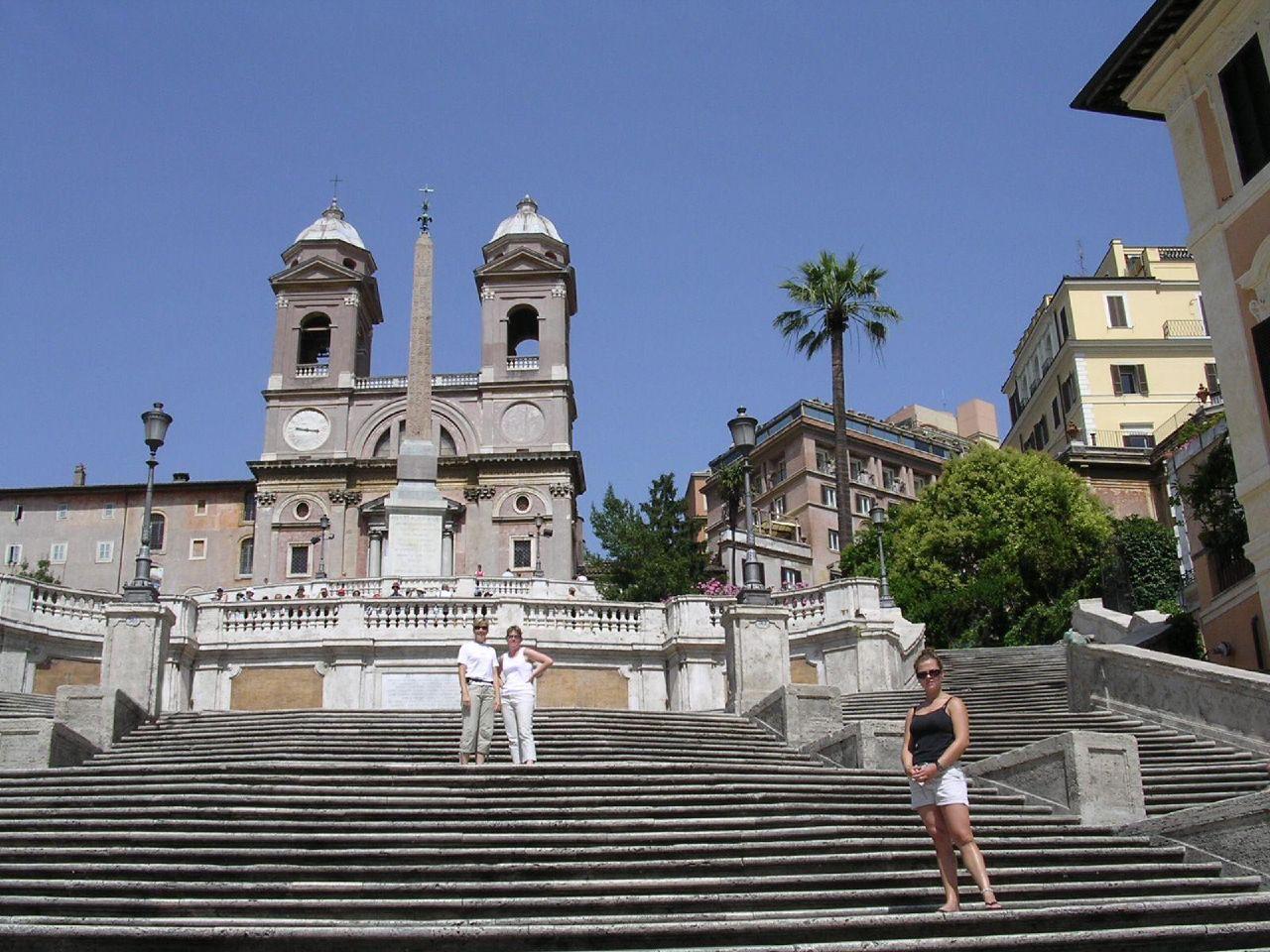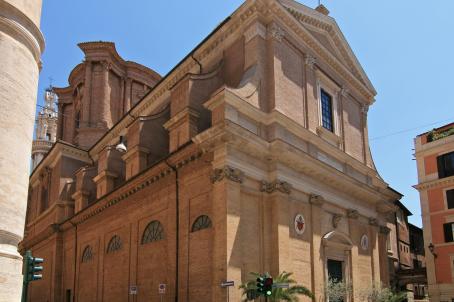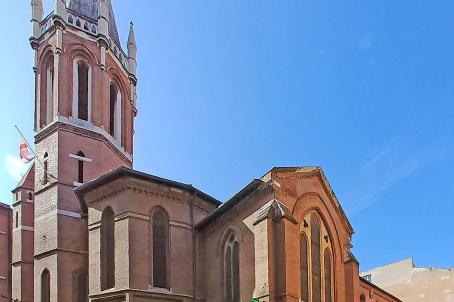Church of the Holy Trinity of the Mountains
The Church of the Holy Trinity of the Mountains is one of the five French-speaking Catholic churches in Rome, along with St. Louis of the French, St. Nicholas of Lorenese, St. Ivo of the Bretons and Saints Claudius and Andrew of Burgundy. The first part of the church was built between 1502 and 1519 in Gothic style. A new building was added to the Gothic nave in the mid-16th century, covered by a barrel vault and closed by a façade decorated with two symmetrical bell towers, the work of Giacomo della Porta and Carlo Maderno.






